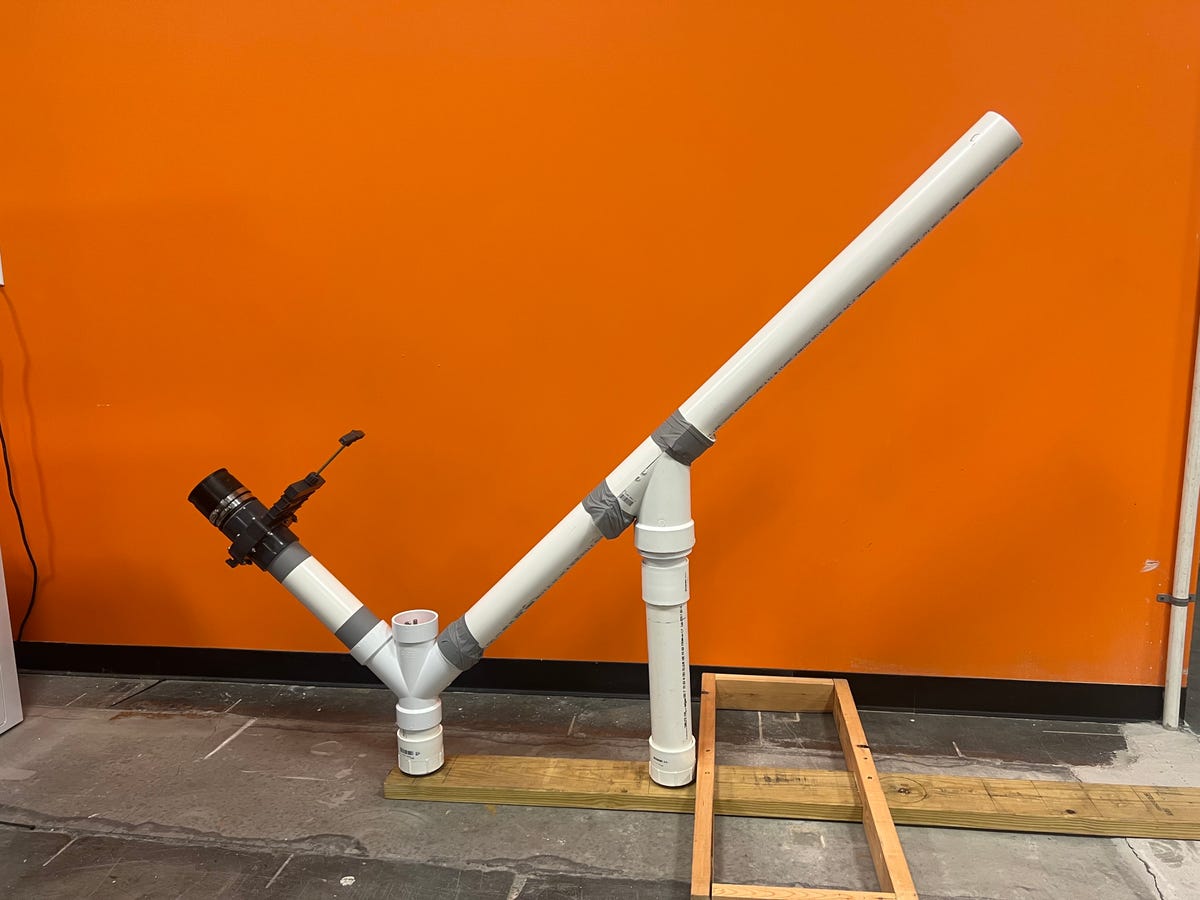We do love our data, so we make sure to collect and analyze manufacturer specs alongside our own test data. There are two main points of data that we collect for leaf blowers: The first is the sound level.
As a contributor to restrictions being placed on outdoor tools across the country, excessive noise can be quite a bother. That’s why we run a sound level test for each model, placing it at approximately the distance you might expect to find this type of product operating from your ear. We position it perpendicular to the sound level meter and record the results. You can see those results in the graph above, where it’s clear that Ryobi’s blower is, by far, the quietest of all the units we tested. Everything else sits in a cluster as they race for the loudest leaf blower — a title currently held by the Enhulk Max Pro Series 58V.
This is where our propulsion cannon comes in. Yes, we could have grabbed some leaves and some loose debris and blown it around our test spaces, and said, “Hey, this thing blows leaves,” but we wanted to go one step further and see how the leaf blowers’ output translated to raw power.

CNET’s air cannon for leaf blower testing.
To do this, we built an air cannon mostly from 3-inch PVC. Amenities included are an air gate, so we can ramp up each unit and release all the air into the cannon instantly, and a restriction plate, to keep the projectile from entering the core of the apparatus. There’s also a base for balancing and a 5-foot barrel for launching the projectile.
The projectile itself is a round plastic tube (similar to those pneumatic-driven tube containers at bank drive-throughs) containing a sand mixture and, in total, weighs 210 grams.
Here’s Eric from our lab demonstrating the air cannon in action. Each colored line represents the longest average distance achieved by each model — of all of them, the Greenworks Pro leaf blower shot our weight the farthest. All of those high scores were achieved in the respective blower’s turbo mode, except for the DeWalt leaf blower, which only has a single setting.
We load the projectile into the cannon, secure the leaf blower nozzle into the input port, ramp the leaf blower up to full strength in the selected mode, open the air gate and foomp. We measure the distance the projectile travels from its resting location within the cannon to the spot of the initial impact on the floor. We average this distance over multiple attempts. Voila.
We tested each leaf blower at both normal and turbo settings, noting that the DK2 leaf blower and the DeWalt Max Flexvolt 3 each only offer a single setting. The colorful visualization above shows the maximum average distance achieved by each brand and makes it clear that our top pick from Greenworks blew the competition away as far as air power is concerned, nearly shooting our weight as far as the professional-grade DK2 blower, which costs well over $1,500. You can find the full results from both rounds of tests in the graph below.
The test results are interesting here when you start comparing specs. Take the Milwaukee and Craftsman blowers, for instance. The advertised specs for CFM and mph are nearly the same — 120 and 450 for Milwaukee and slightly lower numbers of 110 and 410 for Craftsman. Our test data shows Craftsman outperforming Milwaukee by more than 12 feet in normal mode and outperforming it by more than 10 feet in turbo mode.
